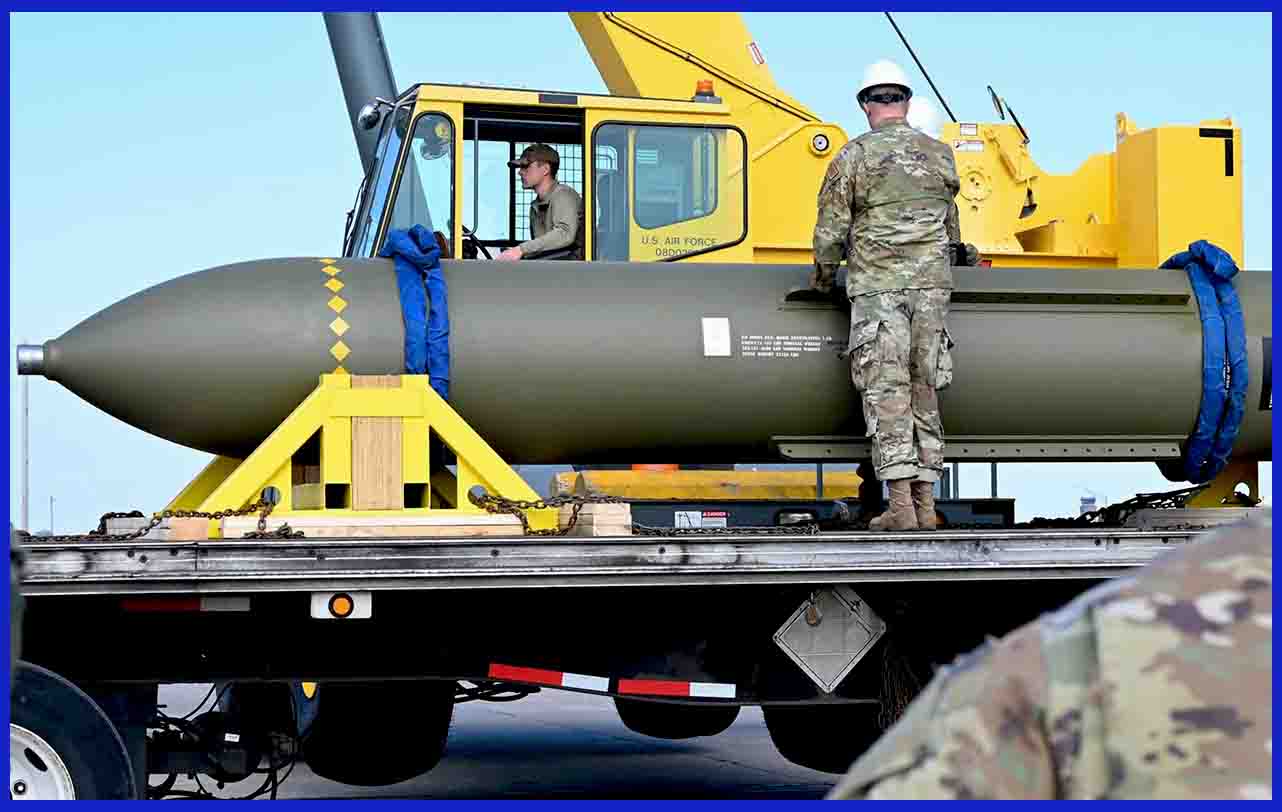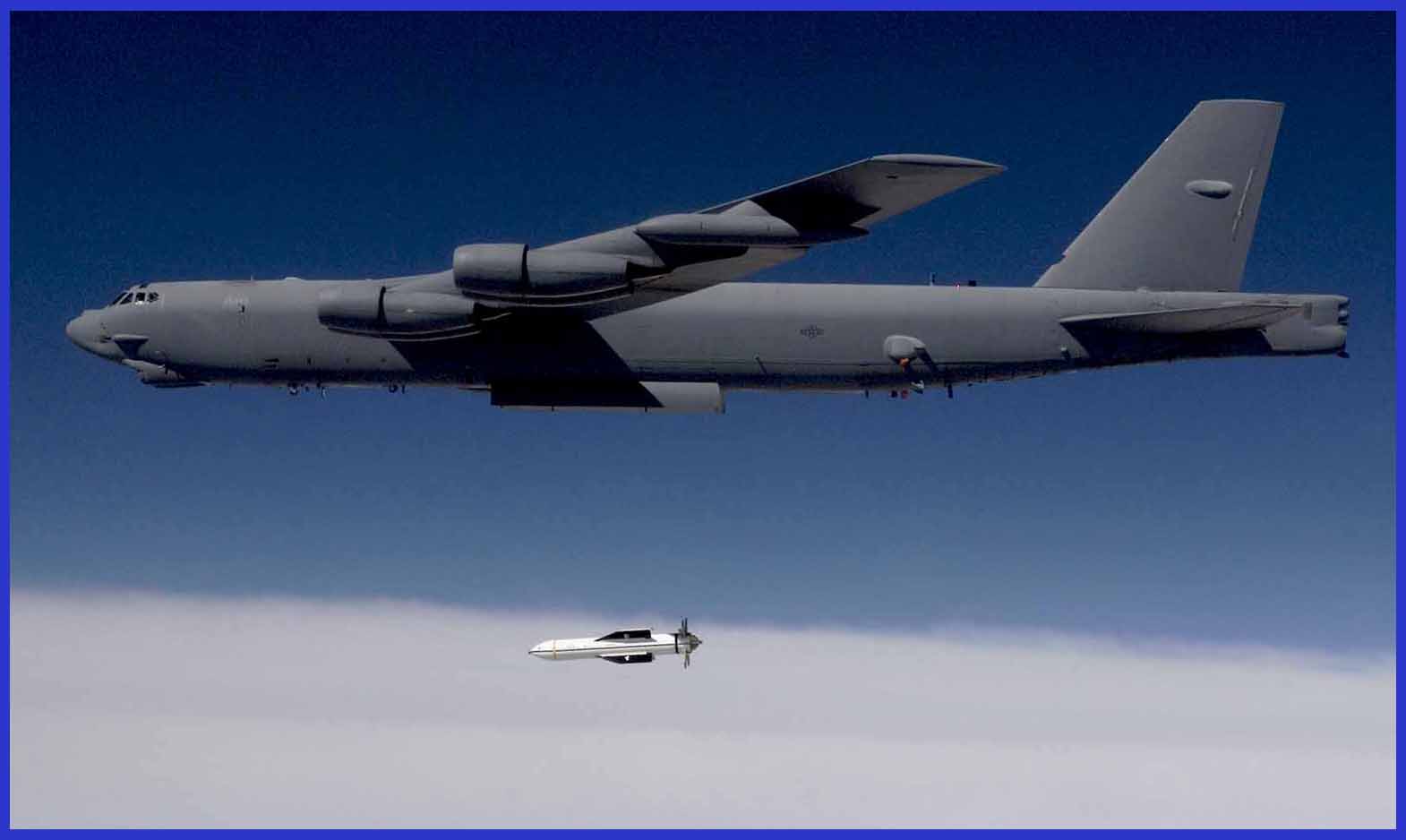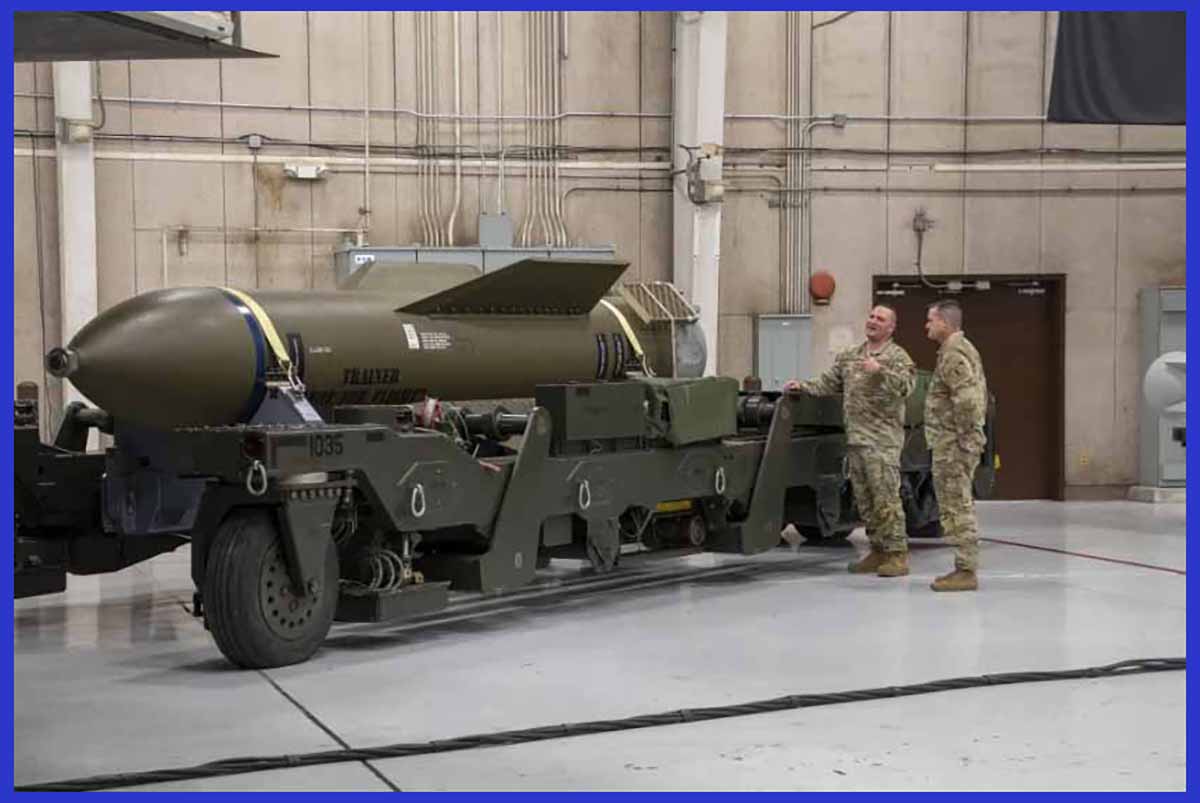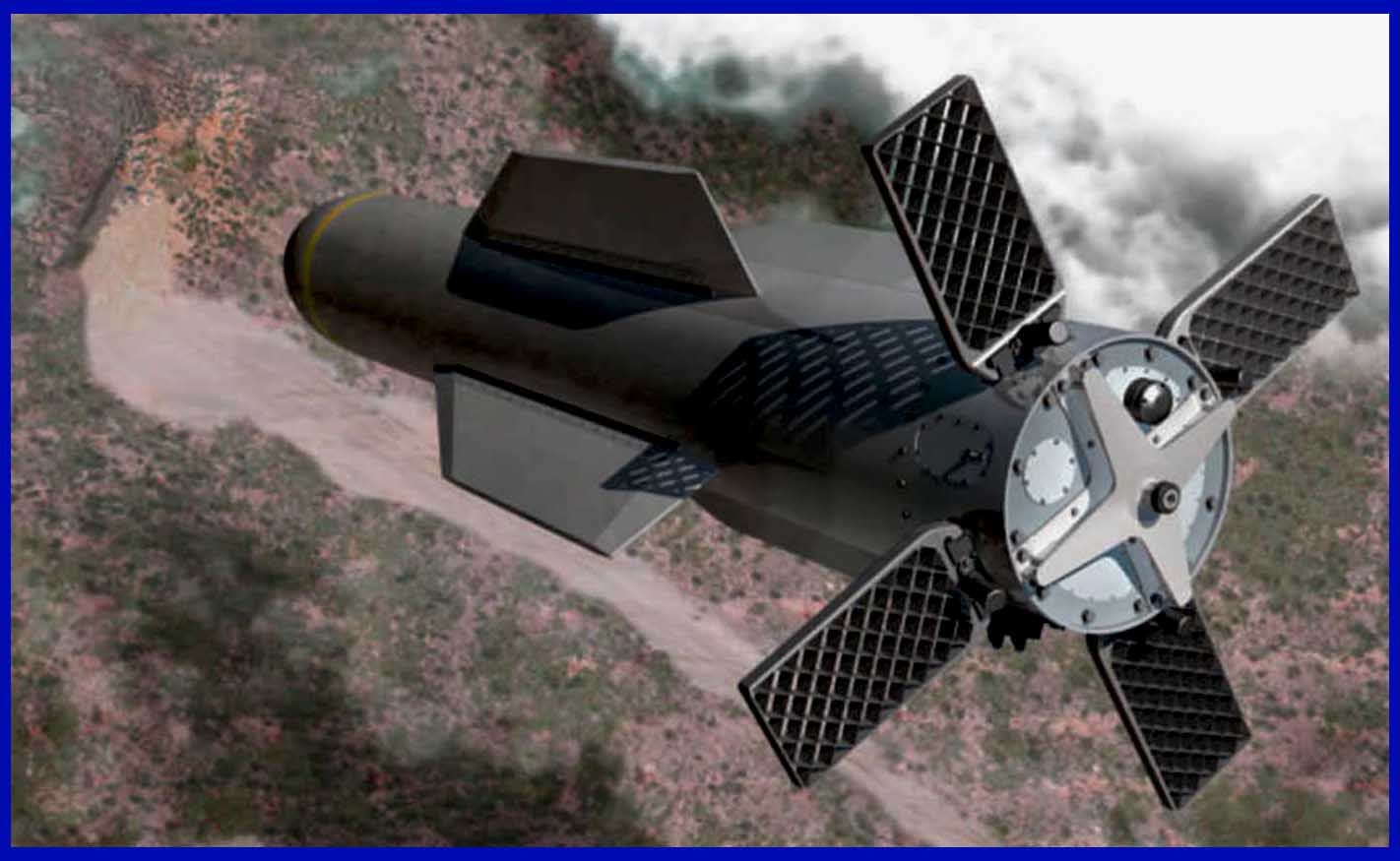In the early 2000s, the United States developed a formidable precision-guided munition specifically designed to target deeply buried and heavily fortified underground enemy facilities. Let’s get to Know the Best of the GBU-57 Massive Ordnance Penetrator (MOP). With dimensions measuring approximately 20.5 feet (6.2 meters) in length and a weight of around 30,000 pounds, the MOP ranks among the world’s largest conventional “bunker buster” bombs. Its official designation is the GBU-57A/B MOP, and it is engineered to execute the challenging and intricate task of reaching and neutralizing an adversary’s weapons of mass destruction concealed within heavily protected installations.

The MOP’s main purpose is to penetrate hardened targets, such as underground bunkers and nuclear weapon storage facilities, by using its substantial weight and speed to break through layers of rock and concrete before detonating. It is designed to be delivered by heavy bomber aircraft like the B-2 Spirit and B-52 Stratofortress, ensuring long-range precision strikes.
The bomb is equipped with advanced guidance systems, including GPS and inertial navigation, to ensure accurate targeting. The GBU-57A/B MOP serves as a deterrent to adversaries with deeply buried assets, reinforcing the United States’ ability to neutralize critical threats hidden beneath the Earth’s surface.

The GBU-57A/B MOP: A Journey of Development
The origins of the Massive Ordnance Penetrator (MOP) development can be traced back to the early 2000s. It was conceived in response to the imperative to address the growing challenges presented by deeply buried and heavily fortified underground facilities.
Conceptualization: The development of the MOP (Massive Ordnance Penetrator) was initiated by the U.S. Department of Defense following the 2003 invasion of Iraq. After analyzing the results of bunker-buster bomb attacks on various sites, it became evident that there were issues with penetration and the level of destruction achieved. This renewed interest in creating a larger bunker-buster munition, led to the initiation of the MOP project by the Defense Threat Reduction Agency, in response to a longstanding Air Force requirement. Boeing was subsequently awarded the contract for designing and manufacturing the bomb.
Design and Testing: Engineers and scientists collaborated to develop an immense bomb capable of penetrating deep underground and defeating heavily fortified structures. The bomb’s design incorporated a robust, high-strength casing along with advanced guidance systems. While the U.S. Air Force has not officially stated a specific military requirement for an ultra-large bomb, it has conceptualized a range of very large penetrator and blast weapons, collectively known as the ‘Big BLU’ collection, which includes the MOAB (Massive Ordnance Air Blast) bomb. The intention is for this bomb to be deployed on the B-2 and B-52 aircraft, utilizing GPS for guidance. There are also plans to deploy it on the B-21 Raider in the future.

To ensure the bomb’s efficacy and dependability, prototypes were built and put through extensive testing. This phase included a number of iterations and modifications to satisfy the predetermined performance criteria. At the White Sands Missile Range in New Mexico, a tunnel owned by the Defence Threat Reduction Agency (DTRA) hosted the MOP’s first explosive test on March 14, 2007.
Production: After finalizing the design and conducting successful tests to demonstrate its capabilities, production of the GBU-57A/B MOP commenced. These munitions were produced in limited quantities, with the Air Force taking delivery of 20 bombs designed for deployment by the B-2 bomber in September 2011. In February 2012, Congress approved $81.6 million for further development and enhancement of this weapon.
Global Strike Command has outlined one of the objectives for the Next-Generation Bomber (e.g., B-21), which is to carry a weapon with effects similar to the Massive Ordnance Penetrator (MOP) or the Next Generation Penetrator Munition (NGPM). This may involve the same weapon or a smaller rocket-powered variant. These advancements are driven by the evolving threat landscape, necessitating more precise and effective tools for targeting heavily fortified and deeply buried facilities.

GBU-57A/B Massive Ordnance Penetrator (MOP) Specifications
- Type: Bunker buster
- Length: 20.5 ft ( 6.2 m )
- Diameter: 31.5 in ( 0.8 m )
- Weight: 12,304 kg ( 27,126 lb )
- Warhead: 2,423 kg ( 5,342 lb ) High Explose Warhead
- Guidance: GPS and inertial navigation
- Penetration: up to 200 ft ( 61 m )
- Launch Platform: B-2 Spirit and B-52 Staratofortress
Furthermore, seize this exclusive opportunity to acquire the exquisite large-scale 1/200 premium die-cast models of the formidable Boeing B-52H Stratofortress. These remarkable and iconic long-range military bombers boast an impeccable track record and are now available for purchase on AirModels with worldwide delivery. Click here now to secure your piece before the limited stock is depleted.

In conclusion, the GBU-57A/B Massive Ordnance Penetrator (MOP) symbolizes the unwavering dedication to technological advancement within the realm of precision-guided munitions. Its development was driven by the need to counter the emerging threat posed by deeply buried and heavily fortified underground facilities, resulting in the creation of a remarkable fusion of engineering expertise and strategic necessity.
Equipped with its substantial size and precise guidance systems, the MOP embodies the capability to strike at the core of some of the world’s most formidable subterranean targets. It stands as a formidable deterrent, reaffirming the United States’ commitment to neutralize significant threats concealed beneath layers of concrete and rock. Nevertheless, one of its current limitations is the absence of a void-sensing fuze, causing it to detonate only after coming to a stop, even if it has passed the intended target area.
Important Announcement for Our Valued Readers!
After an article is published, it is possible that updates or changes may have occurred beyond the time of publication. Therefore, it is important to be aware that certain information in the article might be outdated. To ensure the most accurate analysis, it is highly recommended to verify the content with the latest sources available.
However, we are dedicated to delivering outstanding articles on military products and global updates. Maintaining quality and smooth operation requires resources. Your support sustains our efforts in providing insightful content. By purchasing high-quality products through our affiliated links, you help us keep our platform alive and acquire top-notch items. Your unwavering support is invaluable and inspires us to strive further.
We welcome your suggestions and requests for more information, as we value feedback from our readers. If there’s specific defence material or equipment not covered on our site, please share your request in the comments. We’ll strive to research and provide the required information. We sincerely thank you for your unwavering interest in our website, and we eagerly anticipate hearing from you! Enjoy your reading experience!
